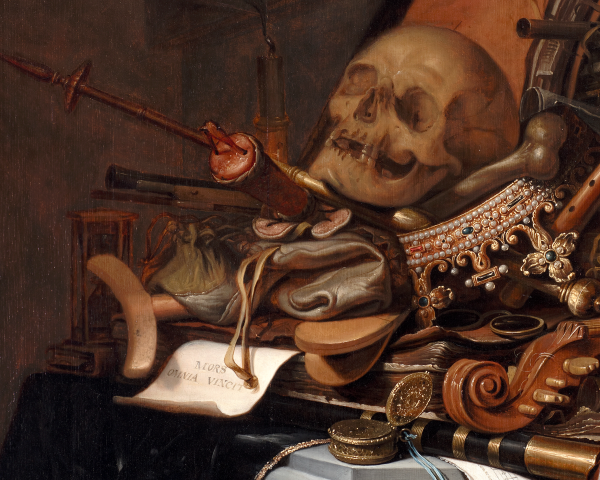
Colnaghi is excited to announce its forthcoming exhibition The Decay of Beauty. The Beauty of Decay., curated by Alfred Kren and taking place at Colnaghi London from 9 October to 8 November 2024. Spanning millennia, the exhibition explores the tension between beauty and its inevitable decay, and how this has inspired artistic creation for thousands of years. The subject is approached from a variety of periods, cultures, and media, presenting unusual dialogues between works. The exhibition at Colnaghi benefits from several high-profile loans from prestigious Private Collections that allow visitors to view rare and outstanding artworks hardly ever seen in public.
Among the earliest works in the exhibition, exceptional Egyptian and Roman sculptures are presented with artworks going all the way to the twentieth century. Notably, an Egyptian sarcophagus face from the Twenty-second Dynasty (c. 942-715 BC) is paired with a nineteenth-century photograph by Émile Brugsch (1842-1930) of a recently excavated mummy, thus dramatically broadening our understanding of Egyptian funerary art while unveiling some of its mysteries.
Artworks from eighteenth and nineteenth century Europe show artists constantly looking to the past, at ruins and fragments from Antiquity. The trompe-l’oeil and architectural capricci – both of which incorporate real and imagined ruins into a landscape of the mind – are eloquently represented by an intimate painting by Louis-Léopold Boilly (1761-1845) and a pair of monumental canvases by Hubert Robert (1733-1808).
The exhibition explores the classical themes of vanitas and memento mori, which exemplify the interplay between beauty and decay in European art history as viewed through the prism of Christian beliefs. A vanitas painting by seventeenth-century Dutch Golden Age painter Jan Vermeulen (1638-1674) speaks directly to Maria Lassnig’s (1919-2014) 2002 work Memento mori, establishing a link between works centuries apart through a common theme and iconography.
This duality between decay and beauty is also presented through the incarnations of Chamunda and Parvati in Indian mythology, as well as Buddhist works from Mongolia and Tibet. The terrifying Chamunda, portrayed with skeletal features, is said to be born from the brow of Parvati (also known as Uma) and is viewed as a form of the goddess, who herself is generally depicted as an idealised female beauty. An Indian tenth-century bust of Chamunda and a mid-twelfth century Chola bronze depiction of Uma feature strikingly in The Decay of Beauty. The Beauty of Decay.
The theme as understood in Tibetan Buddhism is represented by the exquisite and rare Citipati – two dancing skeletons and a superb 19th century Tibetan Kapala, as well as the powerful sculpture of Emma-O dating from the Kamakura period – of the utmost rarity and hardly ever seen outside of Japan. Representing the overlord of Hell in Japanese Buddhism, this awe-inspiring figure is confronted in the exhibition with a very impressive large Chinese scholar’s rock from the 17th to early 18th century, juxtaposing a commanding outward presence with the inward gaze of reflection.
Amongst the most notable works on display is the stunning Portrait of Clara Pasche-Battié by Swiss painter Ferdinand Hodler (1853-1918). The boldness of the glowing orange background and the sharp contrast of the black lines drawing the figure create a stunning portrait which epitomises the power – and fleetingness – of beauty.